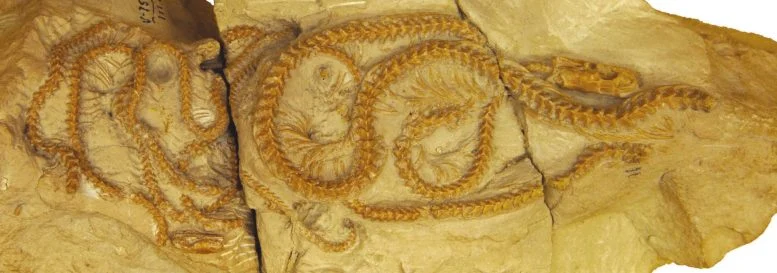Discovery of a 34-Million-Year-Old Snake Fossil in Wyoming
discovery an ancient serpent: 34 million-year-old snake fossil discovered in Wyoming
Paleontology enthusiasts and scientists alike are brimming with excitement over a remarkable discovery in Wyoming: a 34-million-year-old snake fossil. This incredible find not only provides a fascinating glimpse into the ancient past, but also challenges our current understanding of snake evolution.
Discovery: A glimpse into the past
In the rich fossil beds of Wyoming, a team of paleontologists unearthed the well-preserved remains of a snake from the late Eocene epoch. This period, about 34 million years ago, was characterized by significant climate changes and the evolutionary diversification of many species. The fossil includes detailed vertebral and rib structures, which are important for reconstructing the snake’s anatomy and inferring its ecological role.
Evolutionary significance
The discovery of this ancient snake is particularly important for several reasons:
- Transitional features: The fossil shows a combination of primitive and advanced features, suggesting it may be a transitional species. It provides valuable insight into the evolutionary journey from early snakes to the diverse forms we see today.
- Relationship to ancestors: By analyzing the morphological features of the fossil, scientists can better understand the lineage and evolutionary relationships between ancient and modern snakes. This snake may represent an ancestor of both modern constrictors and more advanced snakes.
- Adaptive strategies: The snake’s physical characteristics provide clues about its lifestyle and habitat. These adaptations provide a clear picture of how snakes evolved in response to environmental pressures during the Eocene epoch.
The Eocene Epoch: An Age of Change
The late Eocene epoch was a time of dramatic climate changes, which had a profound effect on the flora and fauna of the time. Dropping temperatures and shifting ecosystems caused many species to go extinct and new species to emerge. The presence of this snake in Wyoming shows that the region had a variety of habitats, from dense forests to wetlands, that were teeming with life.
Broader Implications for Paleontology
This discovery highlights the importance of North American fossil sites in understanding global evolutionary trends. The fossil record in this region continues to provide important data for reconstructing the history of life on Earth. Future research on this fossil will likely delve deeper into its phylogenetic relationships and the environmental conditions of its era.
Looking Ahead
As scientists continue to study this remarkable fossil, we can expect to gain even more insight into the complex history of snake evolution. Each new discovery adds a piece to the puzzle, helping us to understand the dynamic and constantly changing nature of life on our planet.
for detailed understanding go to the









Post Comment